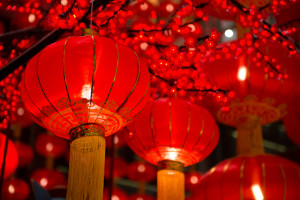
Have you ever been green with envy, seen red or had the blues?
In the UK it is common knowledge that certain colours affect people’s moods, with red creating passion be that positive or negative varieties and yellows are supposed to have a calming effect yet is this the same the world over?
The Inuit have 17 words for white, based on snow conditions, while the word orange did not exist in English until 150 years ago (a Robin does not have a red breast, it has an orange one, but we didn’t have a word for that colour).
Around the world, colours have very different meanings in certain cultures, so now I have a golden opportunity to talk about colours and meanings – I’m tickled pink!
WHITE
In the West it is associated with purity and cleanliness. Brides wear white dresses as a sign of virtue. In the East, China and Korea for example, white is the colour of death, mourning and bad luck. It is the colour worn at funerals. In Latin America it is associated with the Catholic faith, of Angels and the Pope.
BLACK
In the west, black is the colour of mourning, of bad luck and witch craft. Sometimes associated with the devil, night, lies and danger. In Africa black is worn by those in power, men in dark suits. In the Middle East it represents rebirth.
BLUE
Blue has been a sacred colour for many religions, dating back to long before the Virgin Mary wore it in the Bible. However in the West, if we feel blue we are unhappy, yet conversely a Bride would choose to wear “something blue” on their wedding day. It is often viewed as a cold colour, unfeeling. In America, blue is the chosen colour for the IT industry as well as many banking institutions which represents impartiality and fraternity. In Turkey the colour blue is used to repel evil, people often have blue glass eyes in their house or on their jewellery. In North Eastern cultures, blue is associated with immorality, while Hindus associate blue with Krishna, their divine embodiment of love.
YELLOW

In the UK yellow brings images of a warm sunny day to mind, so it is hard to imagine it as having any association with bad luck. However in Germany it represents pure envy. There is another meaning of yellow, which dominates in the American West and that is the association of yellow being the colour of cowardice. Yellow ribbons have also been used as an international protest colour. Hong Kong recently had a Yellow Umbrella protest against Chinese influence in their government.
GREEN
Envy is the word which springs to mind in my British head. In the middle ages, it was the colour of fairies, elves and pixies. In Shakespeare’s time, when he first wrote Midsummer Night’s Dream is it highly likely that Puck and his friends would have been green skinned. Green is also a colour representing fertility, green shoots, green buds; Ireland has the Emerald Isle, due to its lush, fertile landscape. It is the national colour of Mexico and representative of luck, wealth and fortune however in the Far East it means infidelity. A Chinese man would never wear a green hat as it means his wife has been unfaithful. In Indonesia the colour is virtually forbidden altogether.
PURPLE
Royalty, wealth and power are all attributes associated to this colour in the west. It indicates power and luxury too. In many cultures purple is the colour of the senior ranks of religious institution. The highest ranked Buddhist monks wear purple robes as do Catholics of note, though in Brazil it is a colour or mourning. The Purple Heart is given to American soldiers for their bravery.
RED
The final colour in the cultural line up is a powerful one indeed. Even in the British culture it has a complex muddle of emotions. It is wrapped in passion, danger, violence and the devil – seeing red, a red letter day etc. On the positive side, Father Christmas wears red! Red roses symbolise passionate love. In China there is no luckier colour than the colour red. Over Chinese New Year (in about 2 weeks’ time) you will see the streets bedecked with red dragons, red lanterns and red signs. In fact China’s association with the colour red is so strong that it may be why it is also the colour often associated with communism.

When we create new logos for our wonderful clients, we will always ask them if they have any international trade links as we do not want our chosen colour palette to offend and therefore negatively impact on their business.
If you want to be sure that your logo is culturally appropriate, contact us today via https://alchemiststudios.co.uk/
